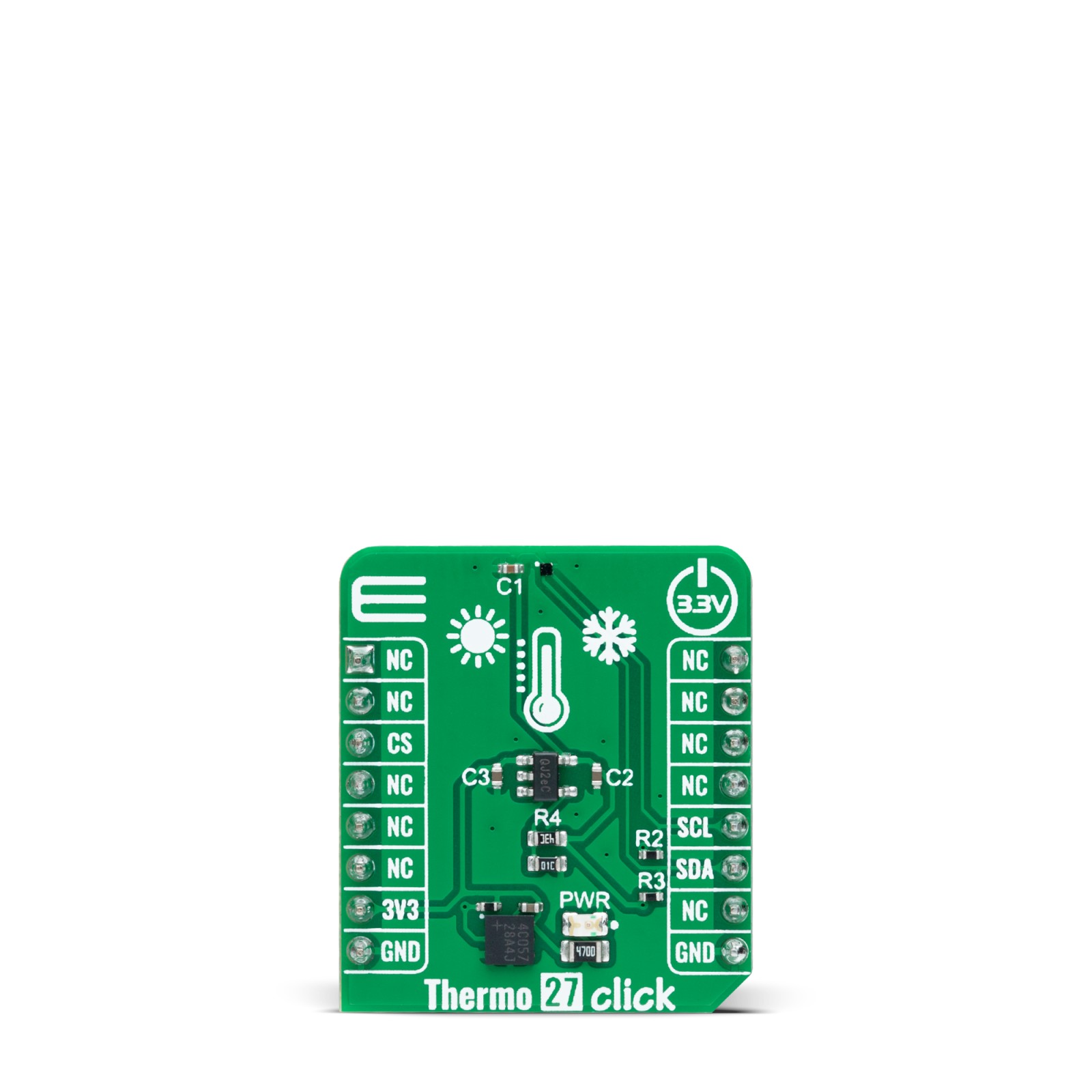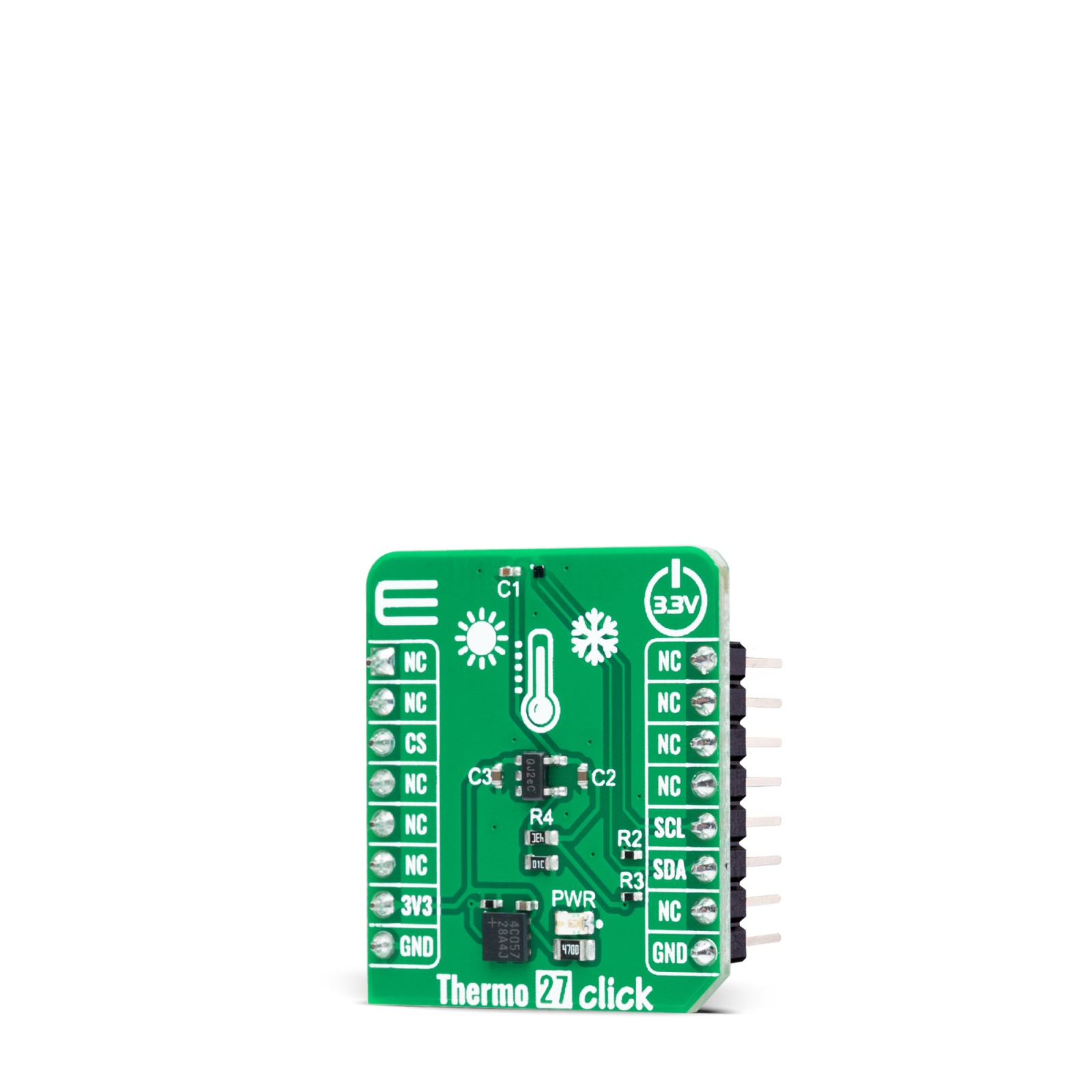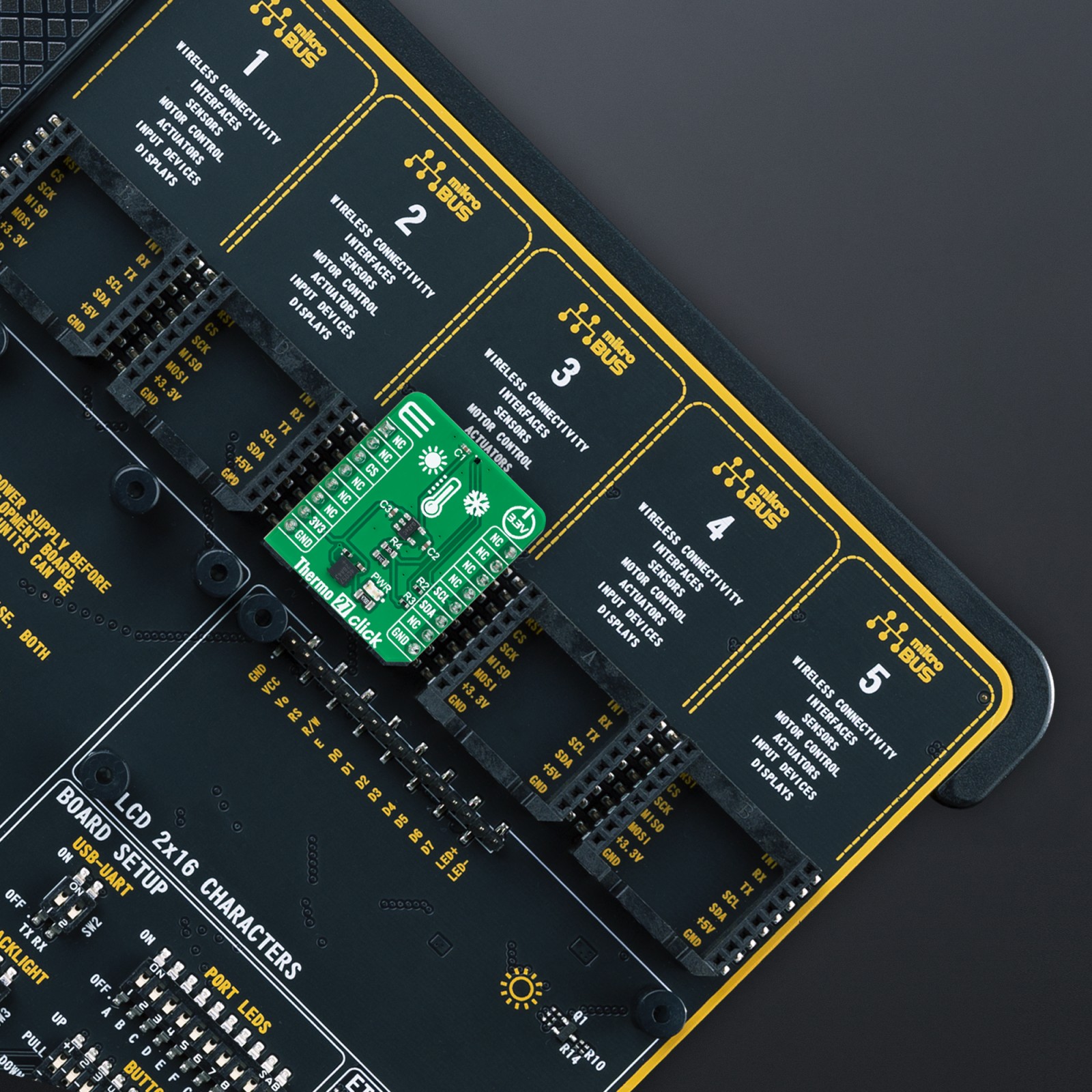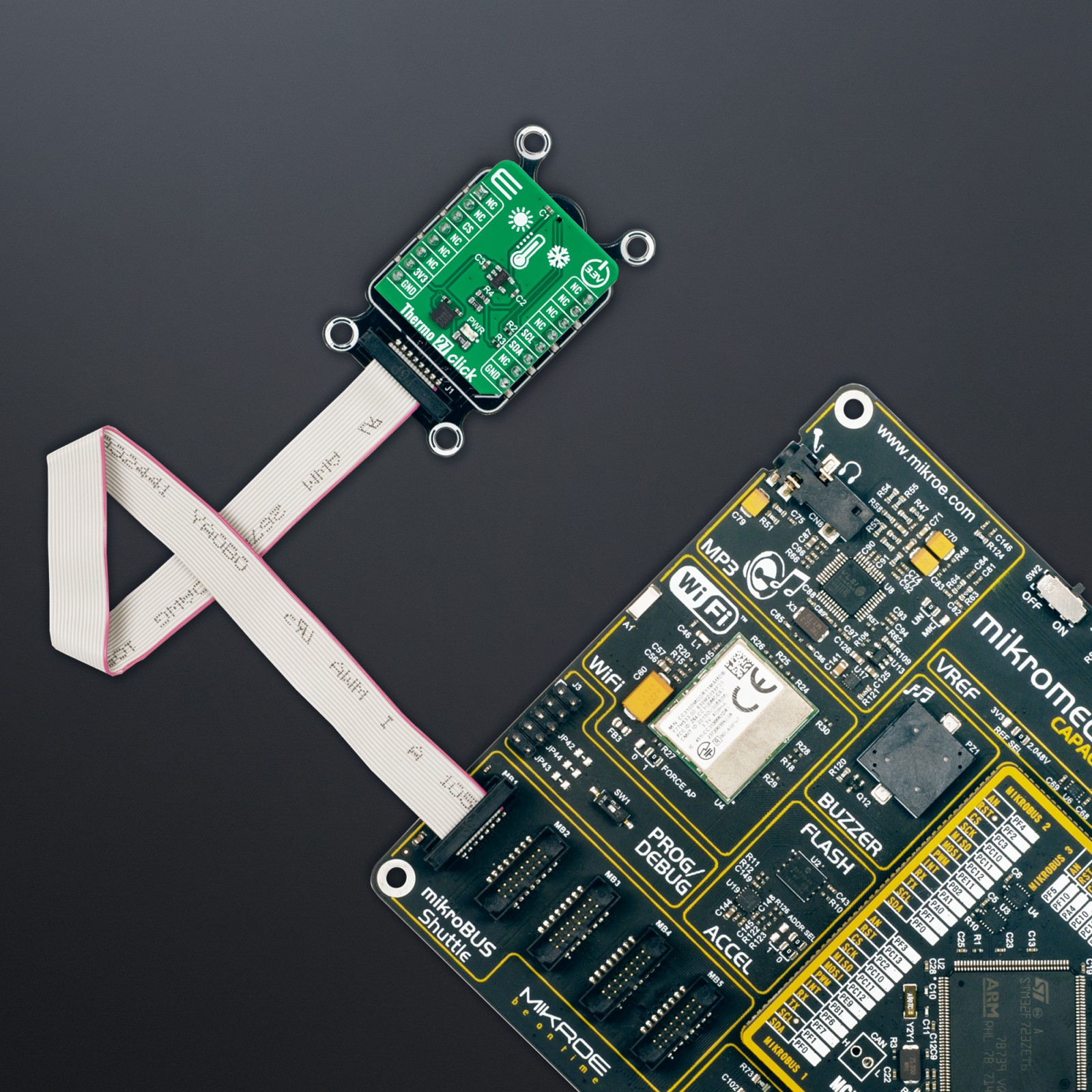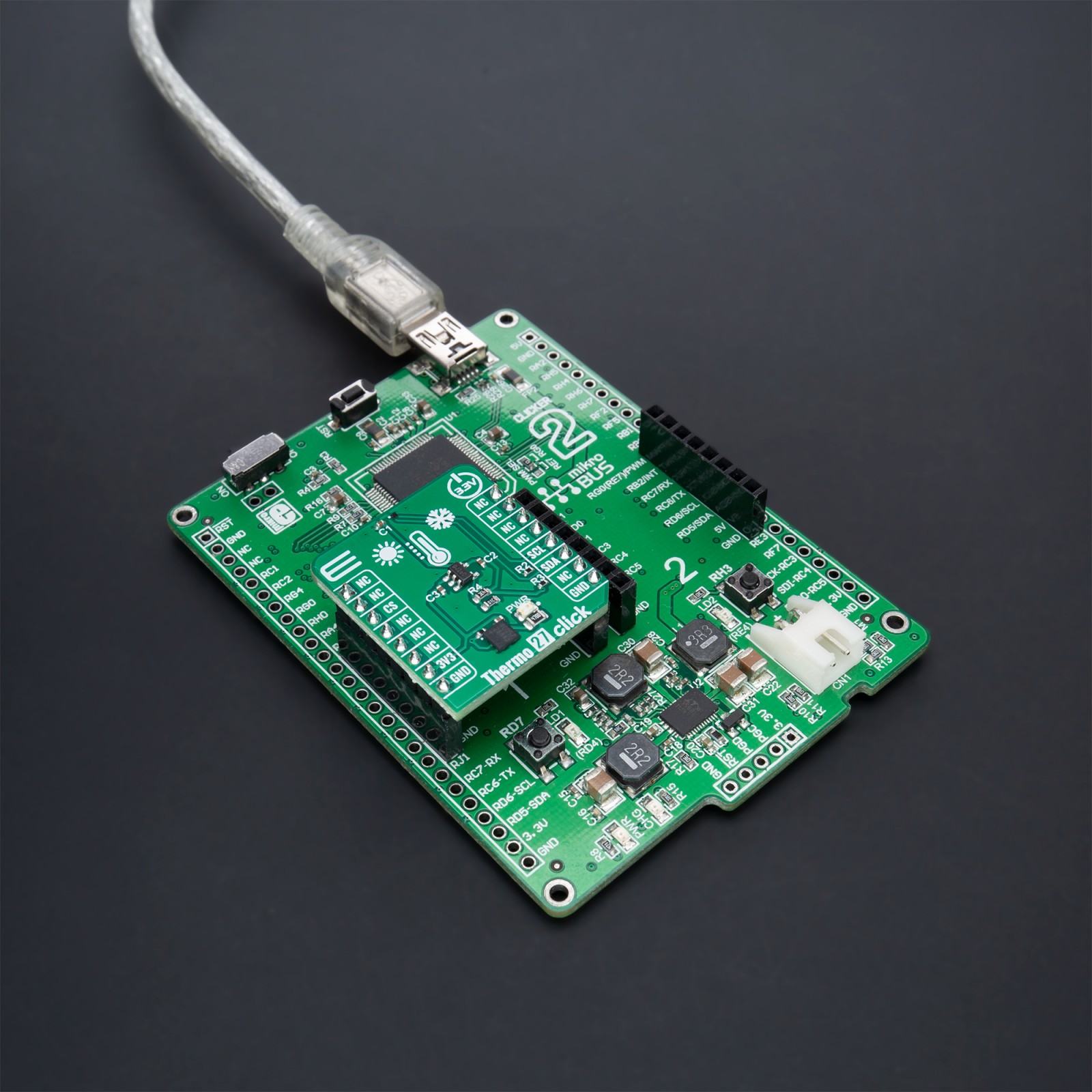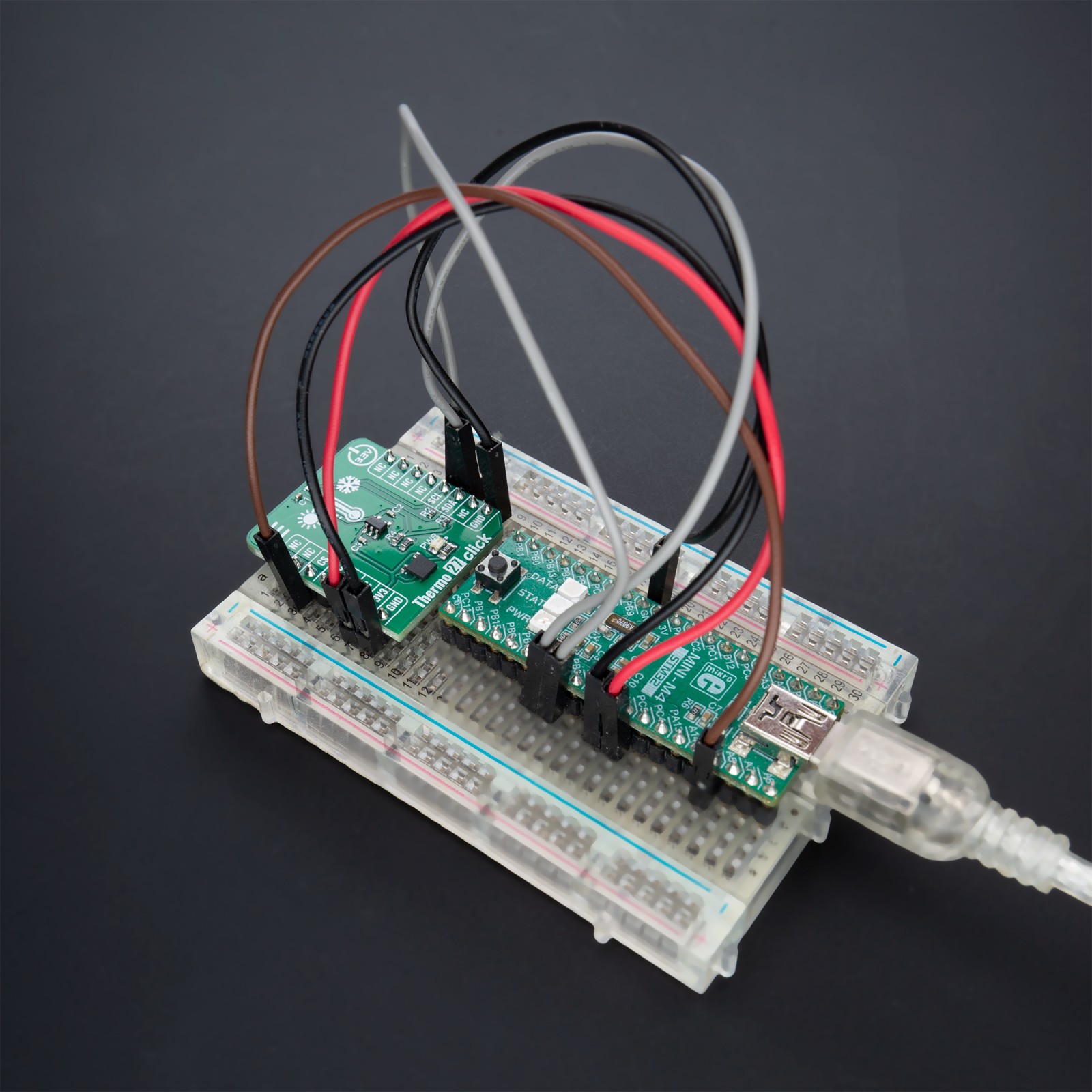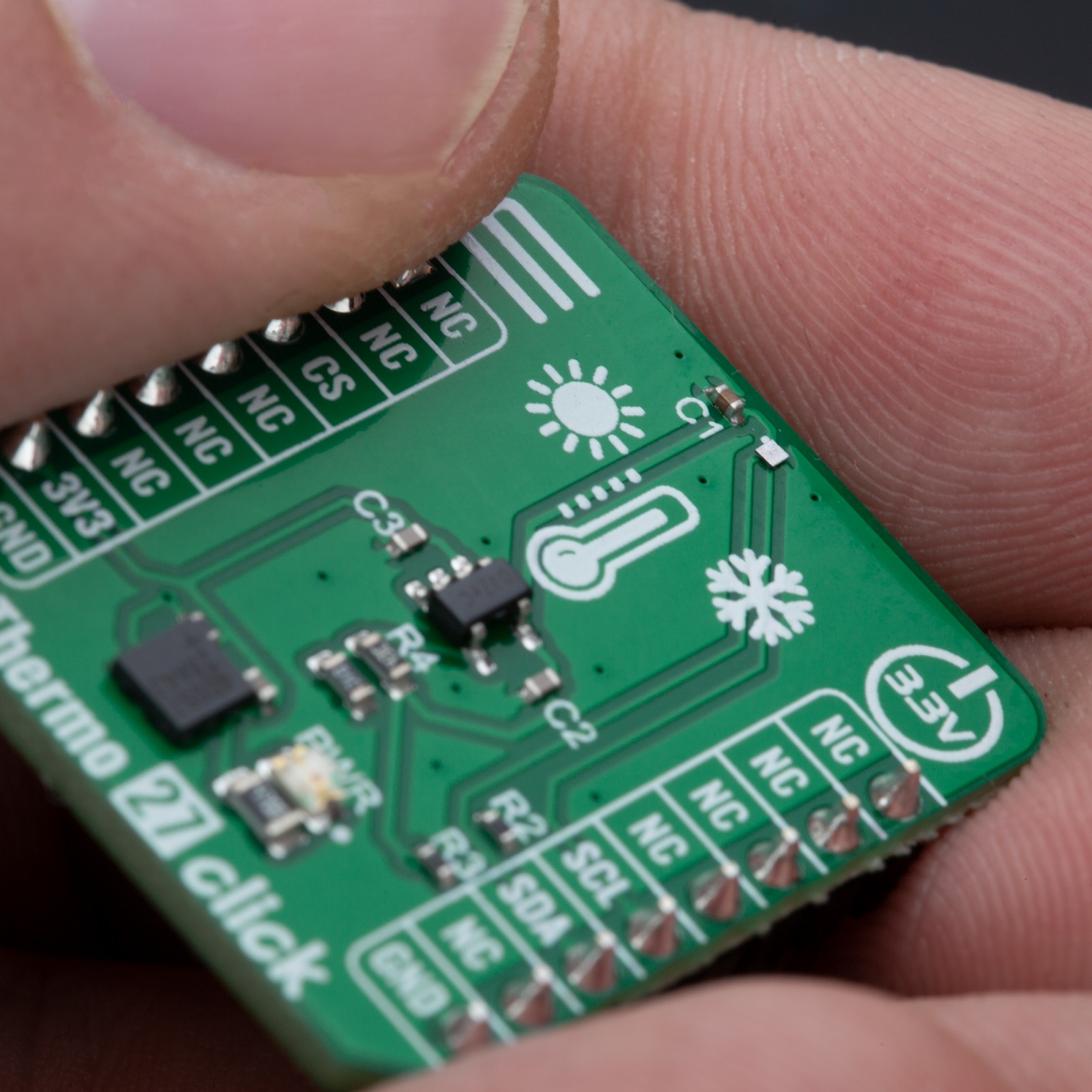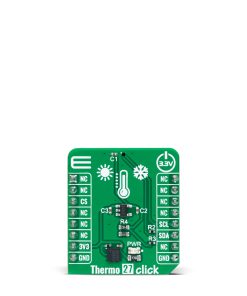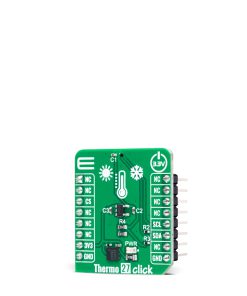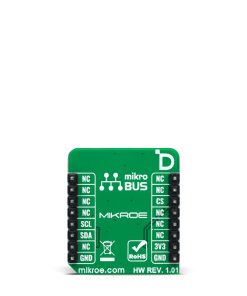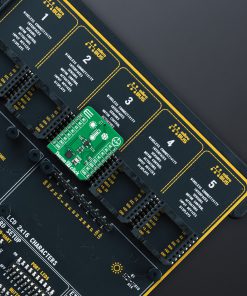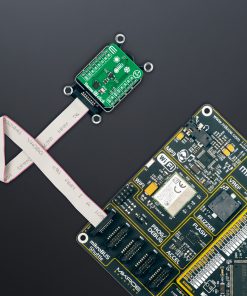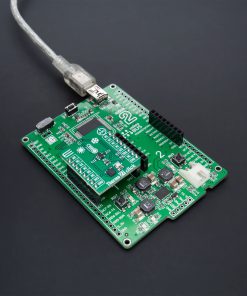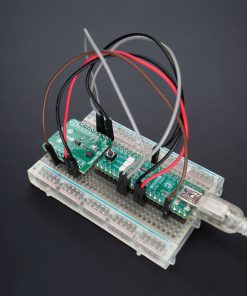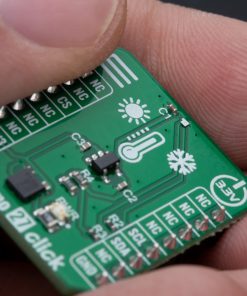Thermo 27 Click
R260.00 ex. VAT
Thermo 27 Click is a compact add-on board for accurate temperature measurements. This board features the TMP114, a high-accuracy digital temperature sensor from Texas Instruments. The TMP114 consists of an internal thermal BJT factory-calibrated sensor, 16-bit ADC, and a digital signal processor, offering a high accuracy of ±0.3°C and a temperature resolution of 0.0078°C. This I2C-configurable factory-calibrated temperature sensor has a high accuracy of ±0.3°C, supporting high reliability and an ambient temperature range from -10°C to 85°C. This Click board™ is appropriate for the thermal management of portable electronics and industrial, consumer, and environmental applications.
Thermo 27 Click is fully compatible with the mikroBUS™ socket and can be used on any host system supporting the mikroBUS™ standard. It comes with the mikroSDK open-source libraries, offering unparalleled flexibility for evaluation and customization. What sets this Click board™ apart is the groundbreaking ClickID feature, enabling your host system to seamlessly and automatically detect and identify this add-on board.
Stock: Lead-time applicable.
| 5+ | R247.00 |
| 10+ | R234.00 |
| 15+ | R221.00 |
| 20+ | R212.68 |

